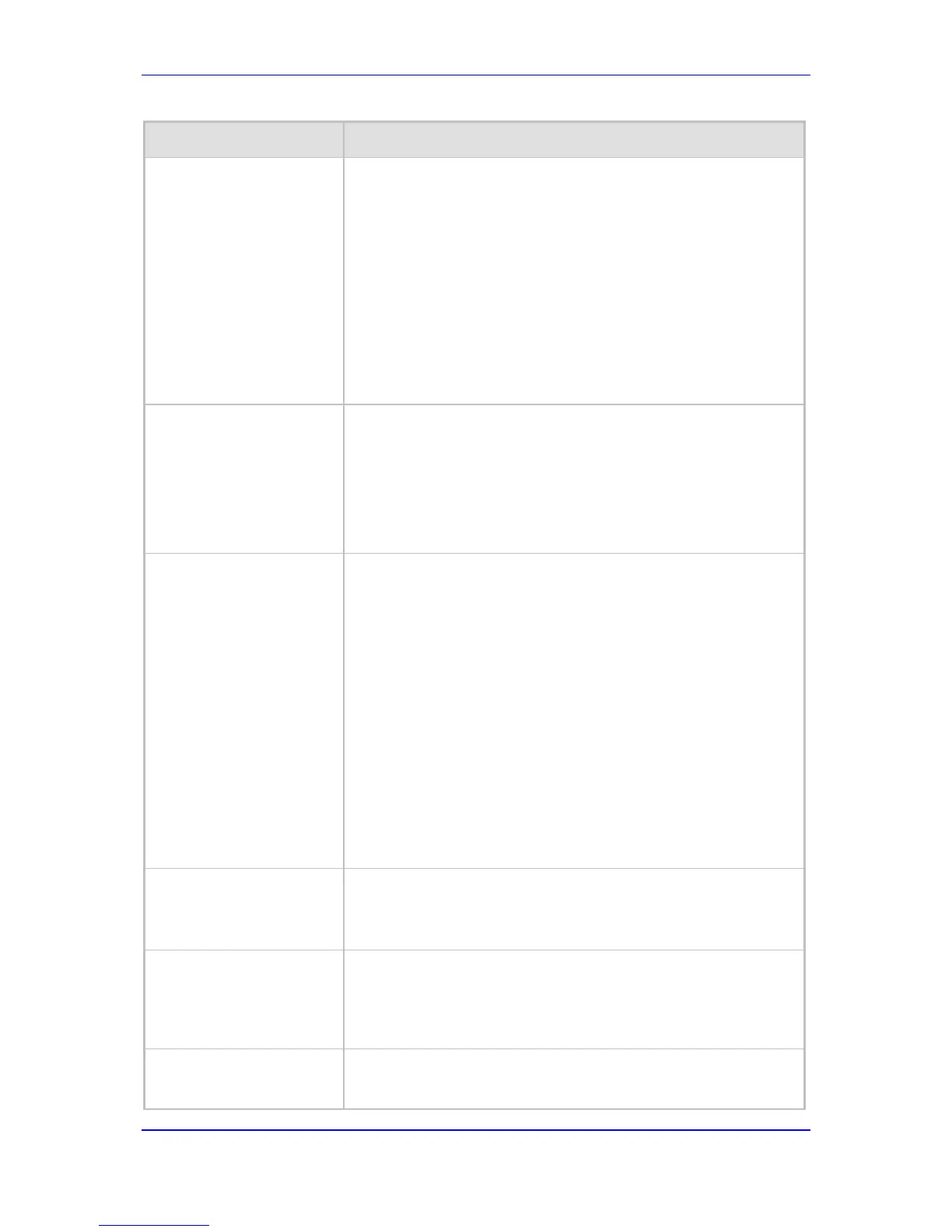Web: SBC No Answer
Timeout
CLI: sbc-no-arelt-timeout
[SBCAlertTimeout]
Defines the timeout (in seconds) for SBC outgoing (outbound IP
routing) SIP INVITE messages. If the called IP party does not
answer the call within this user-defined interval, the device
disconnects the session. The device starts the timeout count upon
receipt of a SIP 180 Ringing response from the called party. If no
other SIP response (for example, 200 OK) is received thereafter
within this timeout, the call is released.
The valid range is 0 to 3600 seconds. the default is 600.
Web: SBC Max Forwards
Limit
CLI: sbc-max-fwd-limit
[SBCMaxForwardsLimit]
Defines the Max-Forwards SIP header value. The Max-Forwards
header is used to limit the number of servers (such as proxies) that
can forward the SIP request. The Max-Forwards value indicates the
remaining number of times this request message is allowed to be
forwarded. This count is decremented by each server that forwards
the request.
This parameter affects the Max-Forwards header in the received
message as follows:
If the received header’s original value is 0, the message is not
passed on and is rejected.
If the received header’s original value is less than this
parameter's value, the header’s value is decremented before
being sent on.
If the received header’s original value is greater than the
parameter's value, the header’s value is replaced by the user-
defined parameter’s value.
The valid value range is 1-70. The default is 10.
Web: SBC Session-Expires
CLI: sbc-sess-exp-time
[SBCSessionExpires]
Defines the SBC session refresh timer (in seconds) in the Session-
Expires header of outgoing INVITE messages.
The valid value range is 90 (according to RFC 4028) to 86400. The
default is 180.
Web: Minimum Session-
Expires
CLI: min-session-expires
[SBCMinSE]
Defines the minimum amount of time (in seconds) between session
refresh requests in a dialog before the session is considered timed
out. This value is conveyed in the SIP Min-SE header.
The valid range is 0 (default) to 1,000,000 (where 0 means that the
device does not limit Session-Expires).
Web/EMS: Handle P-
Asserted-Identity
CLI: p-assert-id
Determines the device's privacy handling of the P-Asserted-Identity
header. This indicates how the outgoing SIP message asserts
identity.

